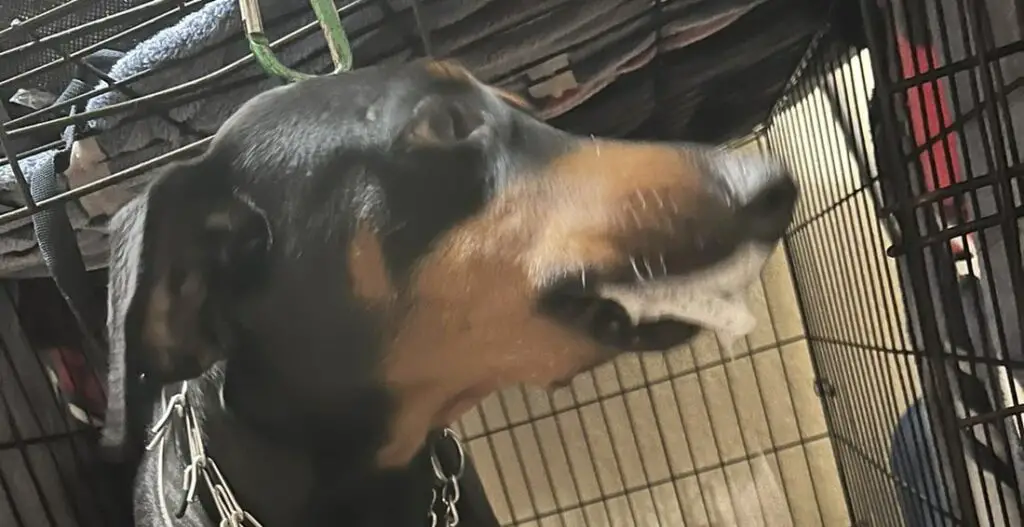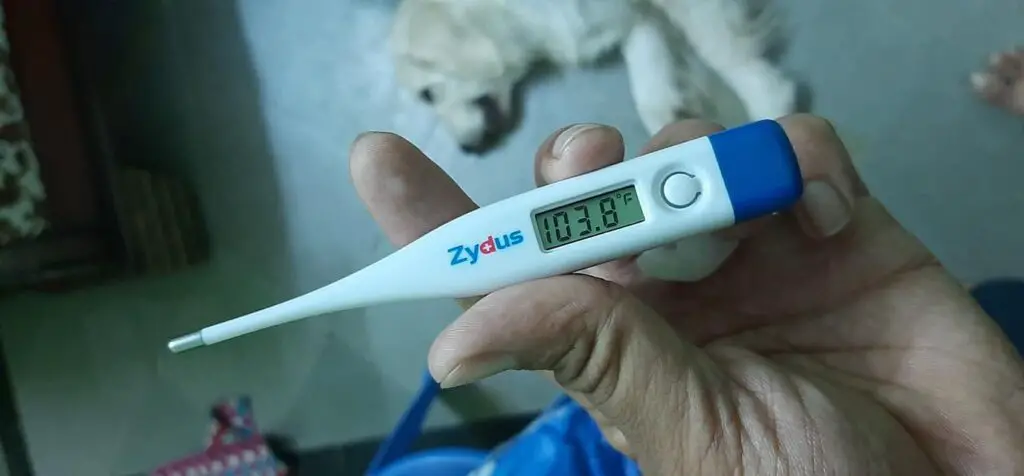As pet owners, we always want to make sure that our furry friends are happy and healthy. However, accidents can happen and sometimes our dogs may ingest something they shouldn’t, such as grapes.
In this blog post, we have discussed the signs that your dog may have eaten a grape and the potential dangers it poses. But what should you do if you suspect that your dog has indeed ingested a grape?
Key Takeaway
- Grape poisoning in dogs is a potentially fatal condition that occurs when a dog ingests grapes, raisins, or currants, leading to an adverse reaction that can cause acute kidney failure.
- Signs your dog has grape poisoning can include vomiting, diarrhea, lethargy, weakness, excessive thirst, increased urination, loss of appetite, and abdominal pain.
- Diagnosis of grape poisoning in dogs is primarily based on the history of grape or raisin ingestion, clinical signs such as vomiting or diarrhea, and laboratory tests showing abnormalities in kidney function.
- Treatment of grape poisoning in dogs involves immediate decontamination through inducing vomiting and administering activated charcoal, followed by aggressive intravenous fluid therapy, anti-emetics, and close monitoring of blood pressure, urine output, and kidney function.
What is Grape Poisoning In Dogs?
Grape poisoning in dogs refers to the toxic reaction that occurs when a dog ingests grapes, raisins, or currants, which can lead to acute kidney failure.
Grape poisoning is a serious condition that can affect dogs of any breed, age, or gender. The ingestion of even a small amount of grapes, raisins, or currants can cause a toxic reaction in dogs.
This reaction is characterized by symptoms such as vomiting, diarrhea, lethargy, increased thirst, and increased urination. If left untreated, it can lead to more severe problems like kidney failure and death.
The exact reason why grapes are toxic to dogs remains unknown, but it’s clear that the toxicity is linked to the fruit itself, not any pesticides or fungi associated with it.
The toxicity level can vary from dog to dog; some might experience severe reactions after only ingesting a few grapes, while others may ingest larger quantities without apparent harm. However, it’s important to note that no amount is considered safe.
From my experience as a veterinarian, I’ve seen firsthand how devastating grape poisoning can be for dogs and their owners.
It’s a situation that can escalate quickly and requires immediate veterinary intervention. In many cases, inducing vomiting is the first step, followed by administering activated charcoal to absorb any remaining toxins.
Depending on the severity of the situation, intravenous fluids, kidney function monitoring, and even hospitalization might be necessary.
10 Signs Your Dog Has Grape Poisoning
Signs of grape poisoning in your dog can include a range of symptoms from vomiting and diarrhea to lethargy, weakness, excessive thirst, increased urination, loss of appetite, and abdominal pain.
1. Increased drooling

Increased drooling is one of the earliest signs that your dog ate a grape and has grape poisoning.
The increased drooling also known as hypersalivation is a way for the dog to get rid of the toxins and prevent further ingestion.
Although some dog breeds drool more than others, you know how much your dog drools. If your pup starts drooling more than usual, there is a good chance that it is experiencing grape poisoning.
It is important to keep an eye out for any unusual level of saliva production in your canine friend as it may signify that there is something wrong and he is trying to rid his body of the toxins from the grapes.
2. Foaming at the mouth

Foaming at the mouth is a sign of grape poisoning and occurs when the dog produces more saliva to get rid of the toxin but also has difficulty breathing.
Basically, foaming at the mouth is excess saliva combined with air. At this stage, it is important that you take your dog to the vet.
When dogs consume food that doesn’t sit well in their stomachs, their bodies will often react by producing an excessive amount of saliva. This can result in foaming at the mouth, as the salivary glands have become overactive and produce more saliva than normal.
If a dog is foaming at the mouth after eating grapes, it is important to take them to the vet immediately for diagnosis and treatment.
3. Gastrointestinal irritation (vomiting, and diarrhea)
Ingesting grapes always leads to gastrointestinal irritation such as vomiting and diarrhea because the body will try to get rid of the toxin.
When a dog digests grapes, they release a tartaric acid that causes gastrointestinal irritation often manifested in vomiting and diarrhea. Basically, the dog’s body will try to get rid of the toxin in any way possible.
What is dangerous about grape poisoning is that the dog can be vomiting and have diarrhea for an extended period of time which leads to electrolyte imbalances.
This means that the dog can get dehydrated and experience another set of serious health issues. If your dog ate grapes and is having diarrhea or vomiting for more than a day, go to the vet.
4. Lethargy

When dogs get grape poisoning they become lethargic as a side effect of the toxins present in their system.
Depending on the size of the dog and the number of grapes, lethargy can set in a few hours, or a couple of days. Lethargy is often accompanied by vomiting and diarrhea.
Seeing your pup lethargic can be scary and painful. This is why it is important to take your dog to the vet if it’s been lethargic for more than a day.
The vet will be able to assess the dog’s condition and determine an appropriate course of action for treatment.
5. Seizures and muscle spasms

Seizures and muscle spasms occur when the dog’s body is overwhelmed by the toxins from grapes or other bacteria present in the food.
The body reacts with involuntary and uncontrolled movements from abnormal electrical activity in the brain. The seizures and muscle spasms can last anywhere from a few seconds to several minutes.
Treatment for grape poisoning usually includes antibiotics and fluid therapy to help flush out the toxins from the body while restoring proper electrolyte balance.
In severe cases, hospitalization may be necessary to prevent further health complications.
6. Difficulty breathing
A dog may experience difficulty breathing if the toxins from grapes have caused inflammation in its respiratory system.
This usually occurs when the dog is left untreated for an extended period of time. This is why it is important to catch the early signs of grape poisoning which is foaming and excessive drooling.
When a dog has grape poisoning, it will try to fight it off by drooling, vomiting, and diarrhea. However, without our help, their body can only fight so much.
If left untreated, after a day or two, the dog’s body will be exhausted from fighting the toxins and will start to experience difficulty breathing.
7. Increased body temperature

Grape poisoning can cause dogs to experience an increase in body temperature because their bodies are working harder than normal to process the toxins.
As their organs work overtime to break down and eliminate the toxins, this process releases heat which causes the body temperature to increase.
It is important to take your dog to see a veterinarian immediately if you think they have grape poisoning so they can get proper treatment.
Early detection and intervention can help reduce the severity of symptoms says Wikipedia.
8. Lack of appetite
Grape poisoning in dogs can lead to a lack of appetite due to the body’s natural reaction to resist consuming food that may be contaminated or spoiled.
The symptoms of grape poisoning can include vomiting, diarrhea, fever, and abdominal discomfort. These symptoms can make it difficult for a dog to eat, resulting in a loss of appetite.
Additionally, grape poisoning can cause dehydration and electrolyte imbalances which can further decrease appetite. Treatment for grape poisoning usually involves a visit to the vet. They will determine the best course of action depending on the severity.
This could involve IV fluids, antibiotics, and other medications that are designed to reduce nausea. Also, they can help get their digestion back on track so they regain their appetite.
9. Uremic breath (ammonia odor)
Uremic breath (ammonia odor) occurs when the dog’s bloodstream has an accumulation of toxins from grape digestion that the kidneys can’t filter out.
If the dog has digested a lot of grapes, it can lead to reduced activity of the kidneys, and an ammonia odor from the mouth is one of the best tell-tale signs of this condition.
Uremia is when levels of nitrogen-containing compounds like urea and creatinine are too high in the blood because the kidneys can’t filter them out.
As these toxins build up, they create a distinct smell associated with uremic breath that many owners describe as sweet or musty. Uremic breath typically occurs late in the course of kidney failure and may indicate advanced stages of the condition.
10. Excessive thirst
Dogs that have grape poisoning often are excessively thirsty due to dehydration caused by vomiting or diarrhea.
Grape poisoning leads to electrolyte imbalances, which can cause increased thirst as the body attempts to restore balance.
If your dog displays signs of excessive thirst after ingestion of a suspect food item, seek medical attention right away for proper diagnosis and treatment.
Diagnosis of Grape Poisoning in Dogs
The diagnosis of grape poisoning in dogs involves observing the clinical signs, knowledge of ingestion, and conducting specific diagnostic tests such as a complete blood count (CBC), a serum biochemistry profile, and a urinalysis.
Clinical Signs
The first step in diagnosing grape poisoning in dogs is observing the clinical signs. Common symptoms include vomiting, diarrhea, lethargy, weakness, excessive thirst, increased urination, loss of appetite, and abdominal pain. These symptoms usually emerge within 6-12 hours after the dog has eaten grapes or raisins.
Knowledge of Ingestion
If you know your dog has consumed grapes or raisins, this can greatly aid in the diagnosis. Any evidence of grape or raisin ingestion, such as remnants found in vomit, should be brought to the attention of your vet immediately.
Complete Blood Count (CBC)
A CBC is a type of blood test that gives information about the cells in a dog’s blood. It can reveal abnormalities that might indicate kidney damage or other issues related to grape toxicity.
Serum Biochemistry Profile
A serum biochemistry profile is another type of blood test that assesses the function of various organs including the kidneys. Changes in certain values can suggest grape poisoning, particularly if kidney function is impaired.
Urinalysis
A urinalysis involves testing a sample of the dog’s urine. This test can reveal problems with the kidneys that might indicate grape poisoning.
From my experience as a veterinarian, I’ve witnessed numerous cases of grape poisoning in dogs. The situation can escalate quickly and requires immediate intervention.
Treatment of Grape Poisoning in Dogs
The treatment of grape poisoning in dogs primarily involves immediate decontamination procedures like inducing vomiting and administering activated charcoal, followed by intensive supportive care such as IV fluid therapy, anti-emetics, blood pressure and urine output monitoring, and regular blood work.
Immediate Decontamination
The first step in treating grape poisoning is decontaminating the dog by inducing vomiting. This procedure helps remove any remaining grapes or raisins from the stomach, preventing further absorption of the toxins.
Following this, activated charcoal is administered. The charcoal binds to the toxins, reducing their absorption into the bloodstream and promoting their elimination from the body.
Intensive Supportive Care
Once the dog has been decontaminated, the next phase of treatment involves intensive supportive care. This typically includes aggressive intravenous (IV) fluid therapy to support kidney function and flush the toxins out of the system.
Anti-emetic drugs may be used to control vomiting, and the dog’s blood pressure and urine output will be closely monitored to assess kidney function.
Regular Blood Work
Regular blood work is essential to monitor the dog’s kidney function and overall health status during treatment.
Any changes in the blood parameters can provide valuable information about the progression of the disease and the effectiveness of the treatment.
In my years as a veterinarian, I’ve seen numerous cases of grape toxicity in dogs. Each case reinforces the importance of immediate veterinary intervention.
The quicker the decontamination procedures are initiated and supportive care provided, the better the chances of a positive outcome for the dog.
It’s a harrowing experience for both the pet and the owner, but with prompt action and comprehensive care, many dogs can recover fully.
Recovery of Grape Poisoning in Dogs
The recovery of grape poisoning in dogs relies heavily on the promptness of treatment, with immediate decontamination and aggressive fluid therapy being key, and though dogs may recover from low doses that are treated immediately, large amounts can have a poor prognosis.
Early Treatment
The first step towards recovery from grape poisoning is early treatment. The most common early symptom of grape or raisin toxicity is vomiting, generally seen within 24 hours following ingestion.
If these symptoms are observed, inducing vomiting and administering activated charcoal are crucial to prevent further absorption of toxins.
Aggressive Fluid Therapy
The primary treatment required to offset grape toxicity is aggressive intravenous fluid therapy. The goal of this treatment is to induce diuresis – increased production of urine – which helps to flush the toxins out of the dog’s system.
Monitoring and Supportive Care
Once treatment has commenced, regular monitoring of kidney function and supportive care are essential for recovery.
This includes blood pressure checks, urine output monitoring, and regular blood work to assess the progression of the disease and the effectiveness of the treatment.
How Long After Eating Grapes Will a Dog Get Sick?
Dogs typically show symptoms of grape poisoning within 6 to 12 hours after ingestion.
The timing of symptoms can vary depending on the amount of grapes consumed and the individual dog’s sensitivity.
The most common early symptom is vomiting, which generally occurs within a few hours of ingestion. Other signs such as lethargy, diarrhea, increased thirst, excessive urination, decreased appetite, and abdominal pain may follow.
In my experience, I’ve seen dogs present with symptoms anywhere from just an hour or two post-ingestion to several hours later.
It’s crucial for pet owners to understand that regardless of when symptoms appear, any grape or raisin ingestion should be treated as an emergency.
The sooner the dog receives veterinary care, the better its chances for a full recovery. Therefore, if you suspect your dog has eaten grapes or raisins, seek immediate veterinary attention.
How Long After a Dog Eats Grapes Can You Induce Vomiting?
Vomiting can be induced in dogs within two hours of grape ingestion, but it’s crucial to do this under the guidance of a veterinarian.
The window for safely inducing vomiting after a dog has eaten grapes is fairly narrow. Ideally, it should be done as soon as possible, typically within the first two hours.
This is because the grapes or raisins will have likely moved out of the stomach and into the intestines after this period, making induction of vomiting less effective.
However, it’s important to note that inducing vomiting should always be done under the direction of a veterinarian.
Certain situations may make it unsafe, such as if the dog is unconscious, having trouble breathing, or has a history of heart disease. In these cases, other decontamination methods may be used, like administering activated charcoal to bind the toxins and reduce their absorption.
In my practice, I’ve seen the benefits of quick action when it comes to grape ingestion in dogs.
Owners who observed the ingestion and sought immediate advice were often able to bring their dogs in within that critical two-hour window, allowing us to induce vomiting effectively and increase the chances of a positive outcome.
The key takeaway here is to seek veterinary advice immediately if you suspect your dog has eaten grapes or raisins.
How To Help a Dog With Grape Poisoning At Home
Helping a dog with grape poisoning at home involves immediate action, potentially inducing vomiting if instructed by a veterinarian, and seeking professional veterinary care as soon as possible.
Immediate Action
As soon as you realize your dog has ingested grapes or raisins, it’s crucial to act swiftly. Remove any remaining grapes from the dog’s reach to prevent further consumption.
Inducing Vomiting
Inducing vomiting may be recommended in some cases, but only if instructed by a veterinarian. This should ideally happen within two hours of ingestion.
The typical method involves using hydrogen peroxide. However, it’s important to get the correct dosage from a professional – typically 1 teaspoon for every 5 pounds of the dog’s weight, up to a maximum amount.
Contacting A Professional
After taking initial steps, it’s vital to contact a veterinarian or poison control center immediately. They can provide further guidance and will likely recommend bringing your pet in for treatment.
Grape poisoning often requires professional intervention, including intravenous fluid therapy, to protect the kidneys and help flush toxins from the dog’s system.
Can Dogs Survive Grape Poisoning Without Treatment?
The survival of a dog after grape poisoning without treatment is highly unpredictable and can result in severe complications, including kidney failure.
Grape poisoning in dogs is a serious condition that can lead to acute kidney failure, which is often fatal.
The exact toxic substance in grapes and raisins that causes this reaction is still unknown, and the amount that can cause toxicity varies greatly between individual dogs.
Some dogs may ingest a large number and show no ill effects, while others can become seriously ill from just a few grapes or raisins.
Without treatment, a dog that has ingested a toxic amount of grapes or raisins may appear to recover initially, only to deteriorate several days later due to kidney failure.
This is why it is absolutely essential to seek veterinary care immediately if you suspect your dog has eaten grapes or raisins, regardless of the quantity consumed.
FAQs
Q: Can my dog get poisoned from eating grapes or raisins?
A: Yes, both grapes and raisins can be toxic to dogs. Even a small amount can potentially lead to kidney failure.
Q: How much grape or raisin ingestion is considered toxic for dogs?
A: There is no specific toxic dose for grapes or raisins in dogs. It is best to avoid giving any amount of grapes or raisins to your dog.
Q: What should I do if my dog has eaten grapes or raisins?
A: If your dog has ingested grapes or raisins, it is important to contact your veterinarian immediately. They may recommend inducing vomiting or administering activated charcoal to help prevent absorption of the toxins.
Q: Can grape or raisin poisoning cause kidney failure in dogs?
A: Yes, grape or raisin ingestion can potentially lead to acute kidney failure in dogs. This is a serious condition that requires prompt veterinary attention.
Q: What is the prognosis for dogs with grape poisoning?
A: The prognosis for dogs with grape poisoning can vary depending on the amount ingested and how quickly treatment is initiated. It is important to seek immediate veterinary care for the best chance of a positive outcome.
Q: What are the clinical signs of grape toxicity in dogs?
A: Clinical signs of grape toxicity in dogs can include vomiting, diarrhea, abdominal pain, weakness, increased thirst and urination, and decreased appetite.
Q: What should I do if my dog ate a grape?
A: If your dog ate a grape, it is important to contact your veterinarian immediately. They will be able to advise you on the best course of action.
Conclusion and final thoughts
In conclusion, it is important for dog owners to be aware of the potential dangers that grapes can pose to their furry friends.
While not all dogs may experience adverse reactions after consuming grapes, it is always better to err on the side of caution when it comes to your pet’s health.




